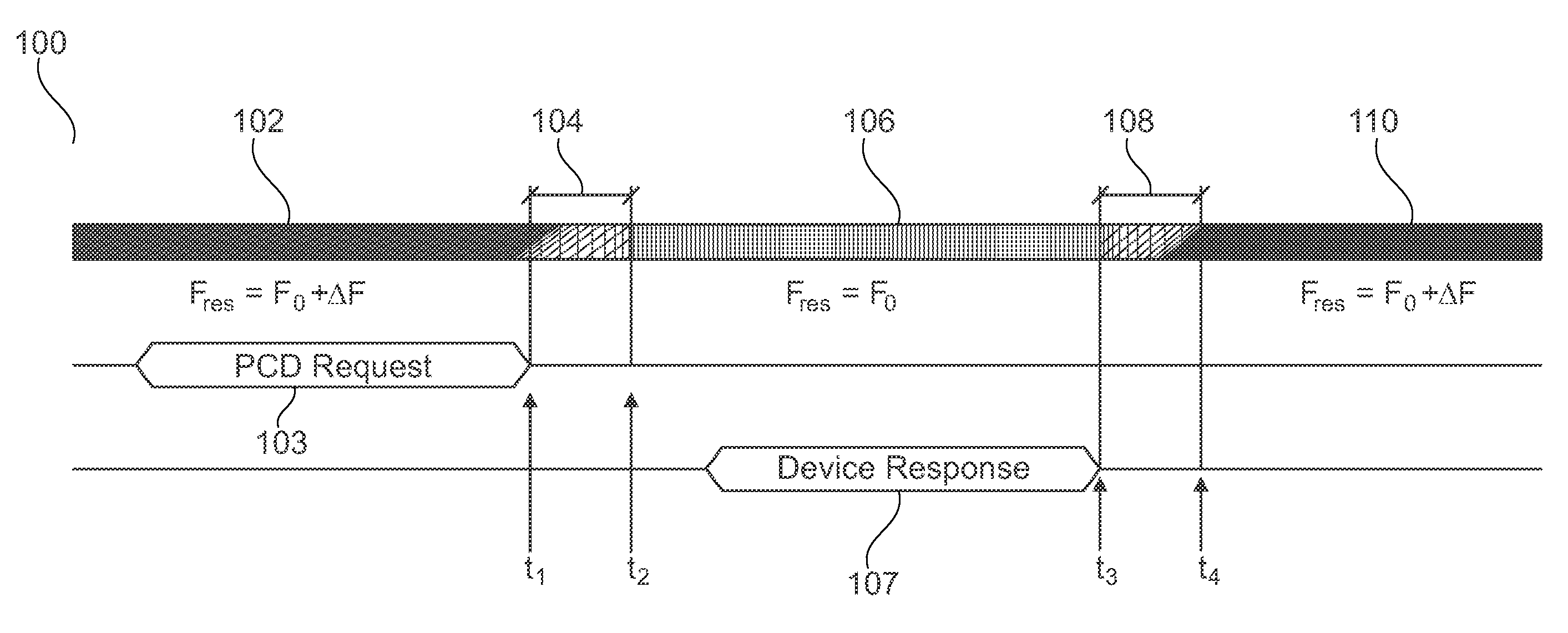RF device and method with improved active load modulation capability
a technology of active load modulation and rf device, which is applied in the direction of near-field systems using receivers, electrical apparatus, transmission, etc., can solve the problems of unsatisfactory antenna configuration for use in receiving mode, unsatisfactory antenna configuration for use in transmitting mode, etc., and achieve long time for settling voltage at the antenna network, reduce q-factor, increase q-factor
- Summary
- Abstract
- Description
- Claims
- Application Information
AI Technical Summary
Benefits of technology
Problems solved by technology
Method used
Image
Examples
Embodiment Construction
[0041]The illustration in the drawing is schematic. It is noted that in different figures, similar or identical elements are provided with the same reference signs or with reference signs, which differ only within the first digit.
[0042]FIG. 1 shows a schematic overview 100 of bi-directional communication between an RF device and a reader / writer device in accordance with an embodiment. At this stage, the general principle of communication will be discussed. A specific example of a hardware configuration of an RF device is given below in conjunction with FIG. 3.
[0043]More specifically, the left-most part of FIG. 1 shows that an RF device is operating in a receiving mode during period 102. More specifically, the resonance frequency fres of the RF device's resonance circuit is set to f0+Δf, i.e. fres=f0+Δf. Here, f0 is the carrier frequency of a reader / writer device (not shown). During period 102, the RF device receives a request for transmission 103 from the reader / writer device. At ti...
PUM
 Login to View More
Login to View More Abstract
Description
Claims
Application Information
 Login to View More
Login to View More - R&D
- Intellectual Property
- Life Sciences
- Materials
- Tech Scout
- Unparalleled Data Quality
- Higher Quality Content
- 60% Fewer Hallucinations
Browse by: Latest US Patents, China's latest patents, Technical Efficacy Thesaurus, Application Domain, Technology Topic, Popular Technical Reports.
© 2025 PatSnap. All rights reserved.Legal|Privacy policy|Modern Slavery Act Transparency Statement|Sitemap|About US| Contact US: help@patsnap.com



